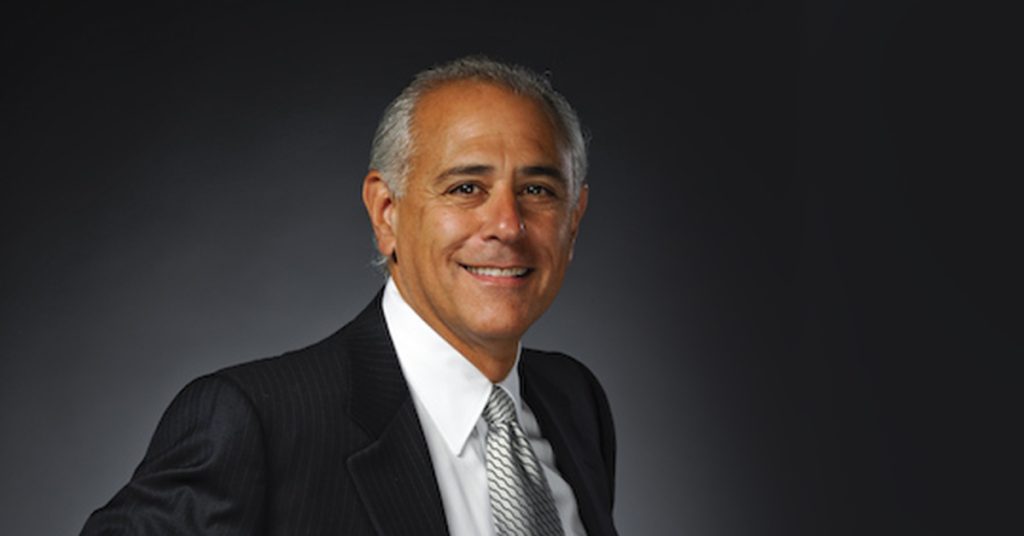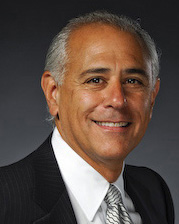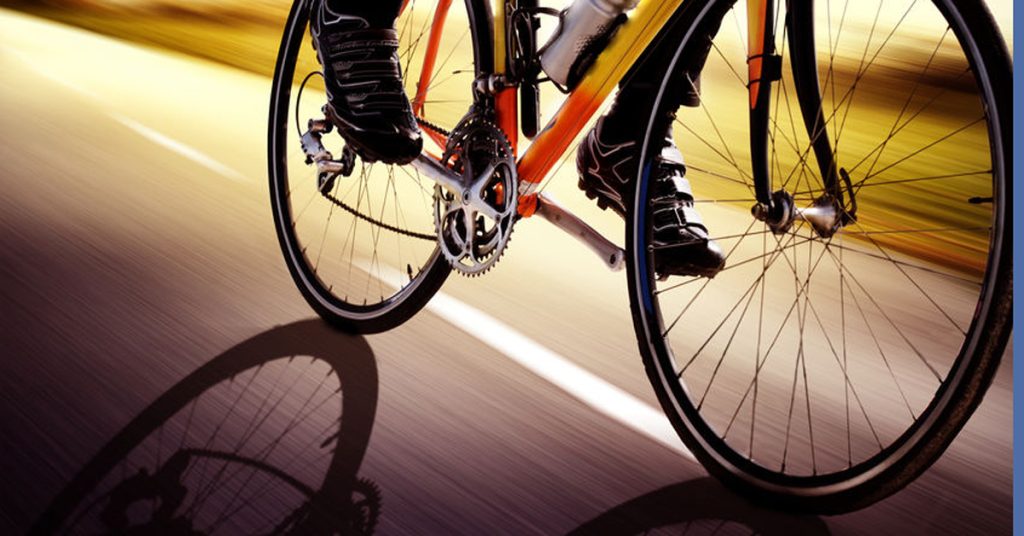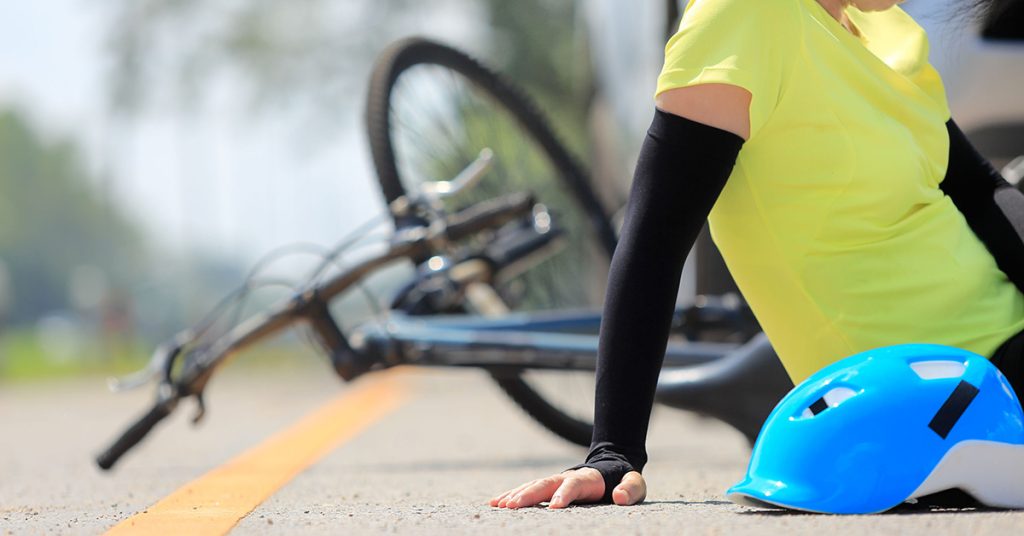Posts Tagged ‘“cycling accidents”’
The Importance of Traffic Cameras in Establishing the Truth: A Video Speaks a Thousand Words
Attorney Ronald E. Gluck recently wrote an article touching on the importance of traffic cameras in his investigation for his client, a cyclist who was seriously injured by a truck. We invite you to read the article, “The Importance of Traffic Cameras in Establishing the Truth: A Video Speaks a Thousand Words,” which is published on the Charles River Wheelers’ website.
You can read more of Ron’s articles by signing up for WheelPeople – The Charles River Wheelers’ newsletter – or by visiting Breakstone, White & Gluck’s website.
Massachusetts Cyclists May Finally Get Three Feet for Safety
 Cyclists may get a little more room for safety if lawmakers pass the road safety legislation Gov. Charlie Baker proposed this week.
Cyclists may get a little more room for safety if lawmakers pass the road safety legislation Gov. Charlie Baker proposed this week.
On Monday, the Baker-Polito administration filed an expansive road safety package, which among other changes, calls for a new primary seat belt law and a controversial measure allowing cities and towns to install red-light cameras.
One proposal – to be called Haley’s Law – seeks much steeper penalties for drivers who operate with a suspended license. Currently, drivers may face fines and/or up to 10 days in jail for the first offense in Massachusetts per M.G.L. c. 90, § 23.
With the new legislation, a driver who lets their license lapse, then drives could face up to $1,000 in fines and 5 years in prison for the first offense. Drivers who cause auto crashes resulting in serious injury could face up to 2 ½ years in a House of Correction. There would be a mandatory two-year sentence, and up to 10 years imprisonment, for drivers convicted in fatal crashes.
The legislation is called, “An Act Relative to Improving Safety on the Roads in the Commonwealth,” and was filed as Massachusetts re-opens after COVID-19. The pandemic changed everything on our roads. But despite lighter traffic, our roads were not safer last year.
According to state figures, Massachusetts saw 334 traffic fatalities during 2020, compared to 336 in 2019.
Safety Reforms for Massachusetts Cyclists
For cyclists, there are two significant proposals: a 3-foot safe passing distance and a truck sideguard mandate for all state-owned and operated trucks.
3-Foot Safe Passing Distance
When traveling near cyclists, the legislation would require drivers to maintain a three-foot safe passing distance and a safe and proper speed. Drivers would have the same responsibility near cyclists traveling without a protective barrier, such as a protected bike lane with flex posts. 36 other states have safe passing laws, according to the Baker-Polito administration. The proposed legislation would give both drivers and future road projects more direction on how to accommodate cyclists. Massachusetts lawmakers have not acted on similar legislation in previous sessions.
Most drivers know they must stay at least three feet away as a precaution to avoid bicycle crashes. But currently, Massachusetts traffic laws only recognize that drivers must pass cyclists at a “safe distance.” There is no consistent message on how much room to give cyclists.
Massachusetts traffic laws currently state in, “approaching or passing a person on a bicycle the operator of a motor vehicle shall slow down and pass at a safe distance and at a reasonable and proper speed.” M.G.L. c. 90 § 14. Drivers must “wait for a safe opportunity to overtake” a bicyclist or other vehicle, per M.G.L. c. 89 § 2.
Stronger Truck Safety Equipment Requirements
The Baker-Polito administration is calling for state-owned and operated trucks to utilize safety equipment such as sideguards, convex mirrors and cross-over mirrors. All these state vehicles weighing over 10,000 pounds would have to comply by Jan. 1, 2024.
The goal is to reduce the risk of injury and death to pedestrians and cyclists, the most likely victims in truck crashes, according to the Volpe National Transportation Center.
In Boston, we have seen numerous cyclists killed when truck drivers and companies are neglect to look. In 2014, the Boston City Council took strong action, passing the first-in-the-nation truck sideguard ordinance. All city-owned and city-contracted trucks must now be equipped with sideguards, convex mirrors, crossover mirrors and blind-spot awareness decals.
Today, as you drive through Boston, you will see large trucks with sideguards. But Boston – and Somerville and Cambridge have similar regulations – can only influence safety within the city. This is why many – including Breakstone, White & Gluck – support passing statewide legislation requiring sideguards protect cyclists and pedestrians from being swept under trucks. While this proposal would only impact state-owned and operated trucks, this could protect many cyclists and potentially encourage private industry.
Support Truck Sideguards in Massachusetts
MassBike is advocating for the passage of “An Act Relative to Improving Safety on the Roads in the Commonwealth,” which will protect cyclists on Massachusetts roads. If you support the organization’s work, visit the MassBike website and learn how to contact your local legislators and voice your support.
Bicyclist and Pedestrian Deaths Keep Rising
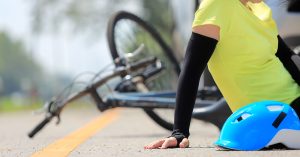 New federal data shows a 2.4 percent reduction in overall traffic deaths last year. But that’s not the full story. The roads were not any safer for pedestrians and bicyclists last year. These groups saw an increase in deaths, now making up nearly 20 percent of all traffic deaths. Many say it’s time to accelerate the conversation on safe road design.
New federal data shows a 2.4 percent reduction in overall traffic deaths last year. But that’s not the full story. The roads were not any safer for pedestrians and bicyclists last year. These groups saw an increase in deaths, now making up nearly 20 percent of all traffic deaths. Many say it’s time to accelerate the conversation on safe road design.
The Washington Post recently reported on the new data, which comes from the National Highway Traffic Safety Administration (NHTSA)’s Fatality Analysis Reporting System.
It shows nearly 36,600 people died in traffic accidents in 2018, a 2.4 percent decrease from 2017, according to The Washington Post. Traffic experts cite several areas of progress. There were fewer deaths caused by speeding and drinking and driving, and a 10 percent reduction in children’s fatalities. Motorcycle fatalities also declined about 5 percent.
What remains troublesome is bicyclists and pedestrians are at high risk. Bicycle accidents and pedestrian accidents are claiming more lives than ever – about 20 percent of all traffic deaths combined. This is a sharp rise, particularly in pedestrian deaths. Just 10 years ago, pedestrians made up 12 percent of all traffic deaths. They now represent 17 percent of all traffic fatalities.
The data shows that 6,283 pedestrians were killed in 2018, a 3.4 percent increase. Another 857 people were killed on bikes or similar non-motorized vehicles, a 6.3 percent increase.
With this new data, many are considering our nation’s antiquated roads, which the Governors Highway Safety Association says were not designed to accommodate so many pedestrians and bicyclists. Over the past decade, cities have encouraged walking and biking as a way to beat the traffic congestion. But use has far exceeded the visions of planners, especially when you considered developments, such as bike-shares, e-scooters and self-driving cars.
The Governors Highways Safety Association further stated that a combination of initiatives would be necessary to improve safety for pedestrians and cyclists, from road engineering to educational approaches.
Pedestrian and Bike Safety in the Late Fall in Massachusetts
This is a challenging time of the year for bike commuters and pedestrians in Massachusetts. The days are getting shorter and darker. And you have to be aware of the statistics. According to the NHTSA data, about 76 percent of pedestrian traffic fatalities occur after dark.
If you walk, consider keeping a neon safety vest in your work bag. Wear it when you go to work and as you leave work. Continue to use crosswalks with traffic signal buttons. Cross with other people.
If you ride your bike, wear your bike helmet and use bike lights. Bike lights are required under Massachusetts law. You must have a white light in front of your bike and a red light in back. Read our article, Facts About Massachusetts Bicycle Laws, to learn more.
Free Legal Consultation – Boston Pedestrian and Bicycle Accident Lawyers
With more than 100 years combined experience, Breakstone, White & Gluck is a leading personal injury law firm in Boston. Our attorneys specialize in representing those injured in motor vehicle accidents, including pedestrians and bicyclists, in Boston, Cambridge and across Massachusetts. If you have been injured, learn your legal rights for seeking financial compensation for your losses, including medical expenses, lost wages and pain and suffering. For a free legal consultation, contact us at 800-379-1244 or 617-723-7676 or use our contact form.
Somerville, Cambridge and Boston Are Among the Top U.S. Cities for Bike Commuters, Report Says
The City of Somerville will finish 2014 out front among cyclists. But Cambridge, Boston and Newton are close behind.
The League of American Bicyclists recently recognized Somerville as the Top Bike Commute City in the East. In Somerville, 7.8 percent of people now commute by bike, a larger share than anywhere in the East, including New York City or Philadelphia. In Massachusetts, Cambridge, Boston and Newton also made the Top 20 list.
The League of American Bicyclists’ calculated the figures based on U.S. Census Bureau Statistics, taking into account a city’s population and number of cyclists. The League of American Bicyclists concentrates on counting everyday bike commuters who ride as their primary mode of transportation, not those who only commute a few days a week or those who ride bikes to other transit.
Nationwide, Somerville reported the fifth highest share of bike commuters. Davis, California had the largest share, with 24.5 percent. Boulder, Colorado was second with 11 percent.
In the East, Cambridge came in a close second to Somerville, counting nearly 6.5 percent of residents as bike commuters. Combined, the two neighboring cities have a population of 186,090 and 7,467 bike commuters.
Still Boston is the larger city, with nearly 645,000 residents, and has the highest number of actual bike commuters in the region. It was listed seventh on the American League of Bicyclists’ list, with nearly 2 percent of residents counted as bike commuters. This works out to roughly 6,660 people. Among U.S. cities, Boston is the ninth fastest growing spot for cycling, with commuters up 122 percent from 1990 to 2013.
Cycling is also growing across Massachusetts. The number of people commuting by bike here has increased over 100 percent since 2005, compared to 46 percent for the average U.S. state. We are eager to see what 2015 brings.
Cycle Tracks For Somerville, Cambridge and Boston
We expect to learn a lot more about cycle tracks in 2015. Boston and Cambridge both have cycle tracks, which go a step beyond traditional bike lanes and separate cyclists from traffic with curbing, shrubbery or flexposts. Many bike advocacy groups see these as a critical tool in reducing bike accidents and injuries.
Somerville is planning cycle tracks along Beacon Street, through to the Cambridge border. In recent years, the state Department of Transportation has reported the highest number of bicycle accidents in Massachusetts in this area.
Cambridge was one of the first communities in the country to build a cycle track and now has one on Vassar Street and Concord Avenue from the Alewife Brook Parkway to Blanchard Road. The recent Western Avenue reconstruction project plans also incorporated a cycle track, as well as special bicycle traffic signals.
Boston built cycle tracks on Western Avenue and Commonwealth Avenue. The city’s 5-year action plan calls for the construction of 21 miles of cycle tracks. High priority areas include the streets around the Boston Public Garden, Boylston Street in Back Bay and Malcolm X Boulevard and Massachusetts Avenue in Roxbury.
Hubway. We are always watching to see what comes out of Hubway. The City of Boston launched the popular bike share program in July 2011 and each year it has expanded and gotten residents, workers and visitors excited about cycling (and encouraged bike helmet use, which is important). The program now has 1300 bikes at 140 stations in Boston, Somerville, Cambridge and Brookline, more than doubling its original size in just a few years. Many stations have closed down for the winter, except in Cambridge. But we will watch for the bike program next Spring.
Boston Truck Ordinance. A few weeks ago, the Boston City Council approved a truck safety ordinance requiring city-contracted trucks to be outfitted with side guards, convex mirrors and blind-spot awareness decals. This first-in-the-nation measure was passed to reduce pedestrian and cycling accidents. Many locally and nationally are watching as the city begins enforcement.
Community Bike Programs. Boston has an active network of cycling groups and committees. If you are a cyclist, we encourage you to seek one out in 2015 or attend an event at Bay State Bike Week in the spring. Here is a list.
Bike Helmet Donations. Watch for us in 2015 too. Breakstone, White & Gluck will again partner with local organizations and committees to donate bike helmets to local children. In 2014 we donated over 2,000 helmets to kids and programs around the state. 2015 will be our third year of making these donations through Project KidSafe, our community service program. Read about our partners.
Related:
“Where We Ride,” American League of Bicyclists.
Read More
Boston City Council Passes Truck Side Guard Ordinance
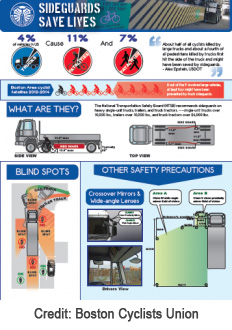 The Boston City Council has passed the Truck Side Guard Ordinance, the first of its kind in the nation. The ordinance will require side guards, convex mirrors, cross-over mirrors, and blind-spot awareness decals on all city-contracted vehicles over 10,000 pounds (or for tractor-trailer trucks with a combined weight over 26,000 pounds).
The Boston City Council has passed the Truck Side Guard Ordinance, the first of its kind in the nation. The ordinance will require side guards, convex mirrors, cross-over mirrors, and blind-spot awareness decals on all city-contracted vehicles over 10,000 pounds (or for tractor-trailer trucks with a combined weight over 26,000 pounds).
This ordinance passed quickly and unanimously last week. Mayor Martin J. Walsh, At-Large Boston City Councilor Ayanna Pressley and the Boston Cyclists Union, a non-profit advocacy group, filed the proposed ordinance on September 9th; it was approved by the council on Oct. 29th. It takes effect 180 days after passage and applies to all future contracts.
Side guards are meant to reduce injuries to drivers, cyclists and pedestrians by closing off the space under a truck. The National Transportation Safety Board recommended a side guard protocol last April, reporting that large truck side impacts comprised of 15 percent of fatal two-vehicle collisions between large trucks and passenger vehicles in 2011. In the United Kingdom, mandated side guards on large trucks reduced cyclist deaths by 61 percent and serious injuries to cyclists by 13 percent, according to a Transport for London study.
Boston’s goal is to protect cyclists, pedestrians and other drivers, but cyclists have faced especially hard road conditions in recent years. Since 2010, 11 cyclists have been killed in Boston, seven in bike accidents which involved a truck or bus, according to city figures. Injuries to cyclists from other causes have also increased, even though the city has developed Boston’s cycling infrastructure dramatically in recent years. The City continues to expand bike lanes and to work on cycle track projects which will put a physical barrier between cyclists and traffic.
Others may soon follow Boston in passing a truck side guard ordinance. Lawmakers in New York have proposed legislation that would mandate side under-ride guards on trucks, tractors, tractor trailers and semi-trailers. In Massachusetts, Somerville, Cambridge and Newton are also considering ordinances. Elsewhere, Portland and Washington D.C. also have proposed legislations or restrictions.
A few additional points:
Pilot Program. Boston began looking at truck side guards in 2013, when the Mayor’s Office of New Urban Mechanics and the city’s Public Works Department undertook a municipal pilot study of truck side guards.
Inspection. Vehicles associated with an awarded city contract will be inspected for side guards by the Inspectional Services Department and issued a permit, certifying the vehicle for 2-years.
Enforcement. Businesses will face a fine for vehicles which are not in compliance. The fines start at $100 for the first offense and rise with repeated violations to potential contract termination. The Boston Police Department will assist with enforcement.
Other City Offices. The Boston Transportation Department and Boston Bikes will assist with education, content expertise on best practice and as the point of contact for constituent reporting.
Exemptions. There are some exemptions, such as for trucks which are used exclusively for snow plowing or emergency vehicles.
Read more about Boston’s new truck ordinance.
About Breakstone, White & Gluck
The Boston personal injury lawyers at Breakstone, White & Gluck have over 100 years combined experience representing injured cyclists and pedestrians. For a free legal consultation, visit 800-379-1244 or 617-723-7676 or use our contact form.
Boston Mayor Proposes New Truck Safety Ordinance
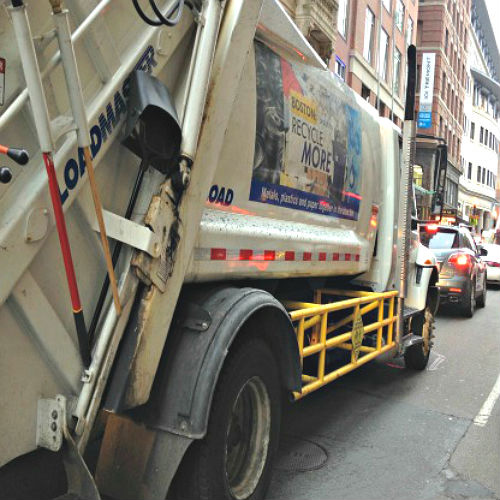
Mayor Marty Walsh is proposing a new safety ordinance for city-contracted trucks in Boston, a measure being widely watched after several cyclists have died in truck crashes. It is believed to be the first such ordinance in the nation.
Walsh, who took office in January, submitted an Ordinance to Protect Vulnerable Road Users to the Boston City Council earlier this week. The City Council was expected to take it up today in session.
If passed, the ordinance will require side guards, convex mirrors, cross-over mirrors, and blind-spot awareness decals on all vehicles over 10,000 pounds which are contracted with the city. The goal is to prevent truck accidents by giving drivers a better view around them. When trucks do not comply, fines start at $100 for the first offense and contracts can ultimately be terminated.
The Boston Cyclists Union called for these measures after a cyclist was killed in a Charlestown truck accident in April. It has released a fact sheet, “Safeguards Saves Lives.” According to the fact sheet, 4 percent of vehicles in the U.S. are trucks though they cause 11 percent of all bicyclist fatalities and 7 percent of all pedestrian fatalities.
Since 2010, 11 cyclists in Boston have died as a result of motor vehicle crashes, according to figures cited by Boston Magazine. Seven cases involved trucks. Here is another concerning figure: From 2009 to 2012, there were 1,700 confirmed cyclist incidents documented by Boston EMS emergency medical technicians and paramedics.
The City of Boston has been working on truck safety. Last year, the city began a pilot program, the largest in the nation. The Mayor’s Office of New Urban Mechanics and the city’s Public Works Department tested three different types of guards on 16 active vehicles driving the streets.
In April, the National Traffic Safety Board made similar recommendations to prevent tractor-trailer accidents.
About Breakstone, White & Gluck
The Boston personal injury lawyers at Breakstone, White & Gluck have over 100 years combined experience representing injured cyclists and pedestrians. We support efforts to make the roads of Boston safer and donate bike helmets for children each year, in Boston as well as Cambridge and Somerville and other communities. For a free legal consultation, visit 800-379-1244 or 617-723-7676 or use our contact form.
Massachusetts Lawyers Weekly Features Breakstone, White & Gluck’s Bike Helmet Donations
Breakstone, White & Gluck was recently mentioned in Massachusetts Lawyers Weekly for our bike helmet donations to children and for attorney David White’s “Volunteer of the Year” award from Boston Bikes, a program of the City of Boston.
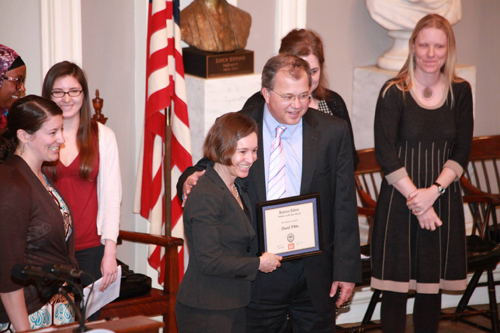 Photo credit: LivableStreets/www.livablestreets.info. Attorney David W. White of Breakstone, White & Gluck and Nicole Freedman, Director of Boston Bikes, during the 6th Annual Boston Bike Update at Faneuil Hall.
Photo credit: LivableStreets/www.livablestreets.info. Attorney David W. White of Breakstone, White & Gluck and Nicole Freedman, Director of Boston Bikes, during the 6th Annual Boston Bike Update at Faneuil Hall.
Read More
Bike Month: Time for Massachusetts to Think About Safety
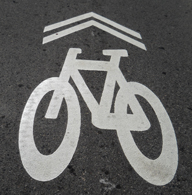 This is National Bike Month, when cyclists gather for events and rides all over the country. In Massachusetts, the busiest time is during Bay State Bike Week, which began last weekend. Cyclists from Boston to Springfield to Cape Cod are being encouraged to pedal to and from work in the name of fitness and reducing traffic congestion on the roads.
This is National Bike Month, when cyclists gather for events and rides all over the country. In Massachusetts, the busiest time is during Bay State Bike Week, which began last weekend. Cyclists from Boston to Springfield to Cape Cod are being encouraged to pedal to and from work in the name of fitness and reducing traffic congestion on the roads.
But along with the fun, Bike Month is a time to ask ourselves and lawmakers if we can make the roads safer to prevent personal injury to bicyclists.
While Boston has been called a world-class cycling city in recent years, safety advocates say we can do better. This month, the League of American Bicyclists dropped the state’s ranking from third to sixth in its 2013 Bicycle Friendly State Rankings, offering these and other suggestions to state officials:
Safe Passing Law. Adopt a safe passing law with a minimum distance of three feet to address bicycle safety.
Vulnerable Road User. Adopt a vulnerable road user law that increases penalties for motorists that injuries or kill bicyclists or pedestrians.
Cell Phone Ban for Drivers. Pass a cell phone ban for all drivers. Currently, Massachusetts bans all drivers from texting while driving but only bans drivers under 18 from talking on their cell phones and driving.
Bicycle Riders Manual. Create a statewide bicycle riders manual with laws, state bike routes and laws for cyclists.
MassBike, the state’s leading advocacy group for cyclists, has been seeking passage of a vulnerable road users bill that increases penalties for drivers who injure or kill a bicyclist or others defined as a vulnerable road user. MassBike first filed a bill with the Massachusetts Legislature in 2011 and refiled a few months ago for the start of the new legislative session.
Under the bill, drivers found guilty of crimes such as motor vehicle homicide or hurting or killing a person while driving drunk would face double the normal fines if the victim is considered a vulnerable road user.
The bill defines vulnerable road users as “a pedestrian or a person operating a bicycle, handcycle, tricycle, skateboard, roller skates, in-line skates, wheelchair, non-motorized scooter or any non-motorized vehicle, or a person riding a horse.”
Additionally, the bill would require violators to take a traffic class and perform 100 hours of community service related to road safety. There would be special penalties for drivers who harass vulnerable users with their vehicles. Meanwhile, victims would be given guidelines for filing civil lawsuits against drivers who assault or threaten them.
Another bill proposed by MassBike is the Bicycle Lane Bill, which would make it a violation for a car to park or stand in a marked bike lane. Boston and some other communities have bans, but MassBike seeks a statewide ban.
Read about other bills filed and supported by MassBike.


